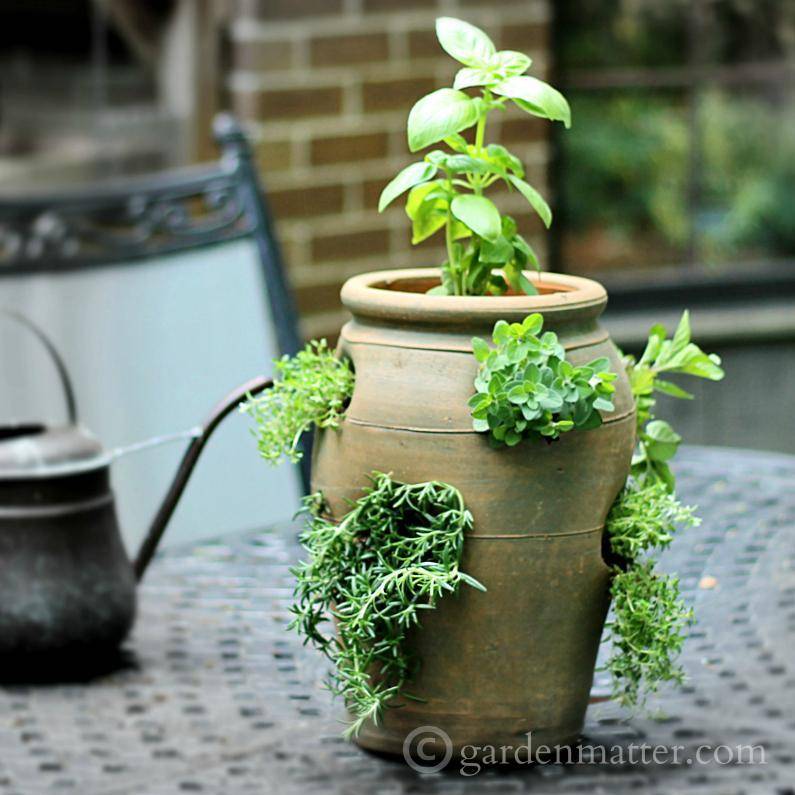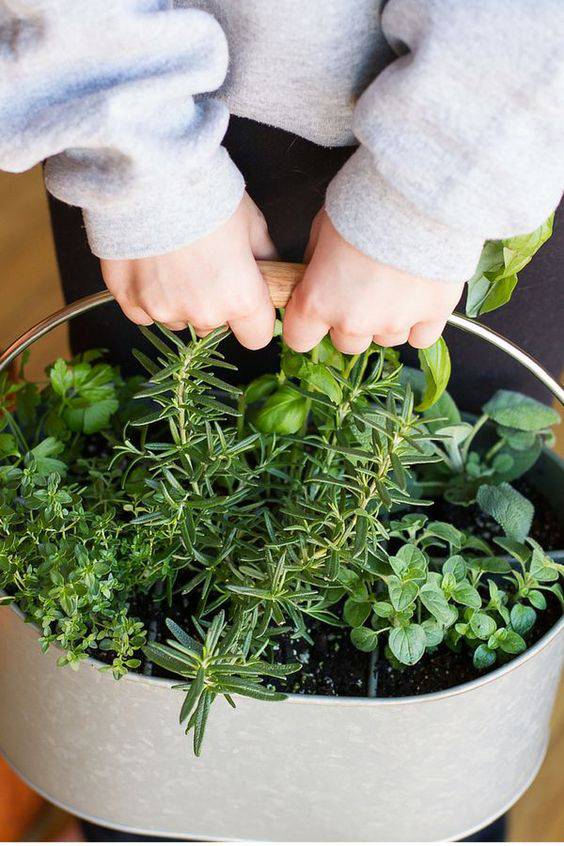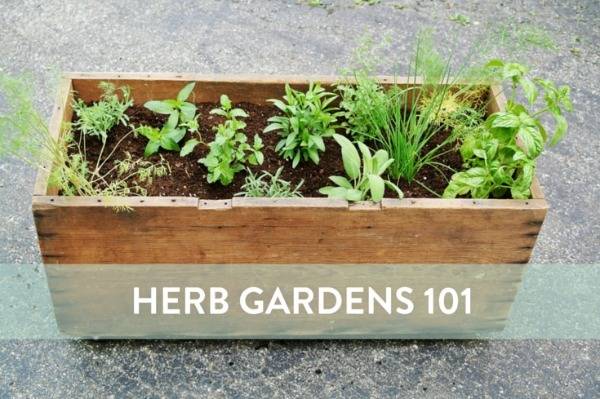Imagine stepping outside your door and snipping a few sprigs of fresh basil or rosemary to add to your dinner. Starting an herb garden can make this a reality, and it’s easier than you might think.
Navigate This Post
Whether you’re a culinary enthusiast or just enjoy the fresh aroma of herbs, having a personal herb garden is both practical and enjoyable. Herbs are some of the easiest plants to grow, making them perfect for beginners.
You don’t need a large yard or a green thumb to get started.
In fact, many herbs thrive in containers, making them perfect for small spaces like balconies, patios, or even sunny windowsills.
From cooking to medicinal uses, the benefits of growing your own herbs are numerous.
Beginners Herb Garden
Before you start planting, it’s helpful to know a bit about the herbs you want to grow.
Basil, rosemary, thyme, and parsley are great starting points because they are hardy and are commonly used in many recipes.
Each herb has its own specific needs, but most share a love for sunlight and well-drained soil.
Another great aspect of herb gardening is its adaptability. You can tailor your garden to fit your lifestyle and needs.
Prefer a low-maintenance garden? Go for perennials like chives and mint that come back year after year. If you love variety, annuals like cilantro and dill might be more your speed, giving you a fresh start each season.
With a little effort, your herb garden will soon be thriving, providing you with fresh, flavorful additions to your meals. Get ready to embrace the joys of growing your own herbs and enjoy the endless possibilities they bring to your cooking and daily life.
Choosing the Right Herbs
When you’re picking herbs for your garden, it’s best to start with varieties that are not only tasty but also easy to care for.
You may want to grow herbs like basil, parsley, rosemary, and sage. These are beginner-friendly, commonly found in many dishes, and pretty low-maintenance.
Your local climate plays a big role in what you can grow successfully.
For instance, if you live in a cooler area, herbs like parsley and chives might be your best bet since they can handle a bit of chill. On the other hand, basil and rosemary love warmer temperatures and lots of sunshine.
Sunlight is another key factor. Most herbs need a good amount of sunlight—around 6-8 hours a day. So, think about where you’ll place your pots or containers to ensure they get enough light. A sunny windowsill, balcony, or patio can work wonders.
Perennials or Annuals?
Perennial herbs like mint, oregano, and tarragon will keep coming back year after year, giving you a reliable supply without much extra effort.
Annual herbs like cilantro and dill, however, need to be replanted each season but offer a nice change in your garden throughout the year.
Finally, consider what you actually like to eat! If you’re a fan of Italian cuisine, basil and oregano are must-haves for pasta sauce and other dishes. Love making fresh salsa? Then cilantro is a great choice. Growing what you love to cook with makes the whole process even more rewarding.
By keeping these factors in mind, you’ll be set to choose the perfect herbs for your garden, making your herb-growing adventure both enjoyable and fruitful.

Essential Gardening Supplies
Getting the right supplies for your herb garden doesn’t have to be overwhelming.
Start with some quality pots or containers. It’s important that they have good drainage to prevent water from sitting at the bottom and causing root problems. The size of the container matters too—make sure it’s big enough for your herbs to grow comfortably.
Next up, you’ll need a good potting mix. Look for one that’s well-draining and specifically formulated for herbs. This will help your plants thrive by providing the right balance of nutrients and moisture.
Compost and organic fertilizers are a great addition to keep your herbs happy and healthy. They offer a slow release of nutrients that can boost plant growth.
Basic gardening tools are also essential. A small spade is perfect for digging and planting. A watering can with a fine spout will help you water your herbs gently and evenly. Pruning scissors are essential for harvesting and trimming your plants to encourage new growth.
Consider adding plant markers if you’re growing multiple types of herbs. These can help you track what’s what, especially when you’re just starting out.
Mulch can be another useful supply, helping to retain soil moisture and keep weeds at bay.
Lastly, think about where you’re going to place your herb garden. Whether it’s on a sunny windowsill, a balcony, or a patio, you’ll need a spot that gets plenty of sunlight.
A small, portable greenhouse might be a worthwhile investment if you want to extend your growing season or protect your herbs from the elements.
With these basic supplies, you’ll be well-equipped to start your herb garden and enjoy fresh herbs all season long!

Planting and Care Tips
When it comes to planting your herbs, start by filling your pots with well-draining soil, leaving enough room at the top for watering. Place your seedlings in the soil, making sure the roots are covered but the base of the plant is level with the soil surface.
If you’re planting multiple herb plants in one container or a raised bed, give them some space so they have room to grow and won’t compete too much for nutrients.
Sunlight is key for most herbs, so pick a spot where they’ll get around 6-8 hours of sunlight each day. This could be a sunny windowsill, a balcony, or a spot in your garden.
When it comes to watering, keep the soil moist but not soggy. Herbs don’t like sitting in water, so good drainage is crucial. Water the plants when the top inch of soil feels dry to the touch. Your pots should have drainage holes as well, just in case.
Regular pruning is another important step. It not only helps maintain the plant’s shape but also encourages new growth, making your herbs bushier and more productive. Use clean scissors to snip the stems just above a leaf node, which is where new leaves will sprout.
Keeping an eye out for pests and diseases can save you a lot of trouble. Aphids, spider mites, and other pests can sometimes be a nuisance. Natural remedies like insecticidal soap or neem oil can help manage these pesky invaders.
Lastly, don’t forget to feed your herbs. A balanced, organic fertilizer every few weeks can do wonders for their growth and flavor. Just follow the instructions on the package to avoid overfeeding.
By following these simple planting and care tips, you’ll be well on your way to a thriving herb garden.

Harvesting Your Herbs
Knowing the right time to harvest your herbs can make all the difference in flavor. The best time to pick most herbs is just before they flower. This is when their leaves are most flavorful and aromatic.
When you’re ready to harvest, use clean scissors to snip off the leaves or stems you need. Aim to cut above a leaf node to encourage new growth, but try not to take more than one-third of the plant at a time to keep it healthy and productive.
Once you’ve harvested your herbs, you can use them fresh or store them for later.
Fresh herbs are perfect for adding a burst of flavor to your salads, soups, or dishes right away. If you have more than you can use immediately, consider drying or freezing them.
Drying herbs is simple: tie the stems together and hang them upside down in a dry, airy place. Once they’re fully dried, you can crumble the leaves and store them in airtight containers.
Freezing is another great option, especially for soft herbs like basil, cilantro, and marjoram. You can chop the leaves and freeze them in ice cube trays with a bit of water or olive oil.
Another fun way to preserve your herbs is by making herb-infused oils or vinegars. Place the fresh herbs in a clean bottle, fill it with your choice of oil or vinegar, and let it sit for a few weeks to infuse. This can add a gourmet touch to your cooking and make great gifts too!
Troubleshooting Common Issues
Sometimes, even the best herb gardens encounter problems.
Pests like aphids and spider mites can be a hassle, but natural solutions like insecticidal soap or neem oil can help keep them in check.
It’s also crucial to water your herbs just right—too much can lead to yellowing leaves, while too little may cause them to wilt.
Keeping an eye on your plants regularly will help you spot issues early.
Make sure they have good air circulation and that your garden area is tidy to prevent diseases and pest problems. If you notice any trouble, act quickly to give your herbs the best chance to bounce back.
By staying vigilant and addressing any issues promptly, you’ll keep your herb garden healthy and productive. Enjoy nurturing your herbs and savor the fresh flavors they bring to your kitchen!
